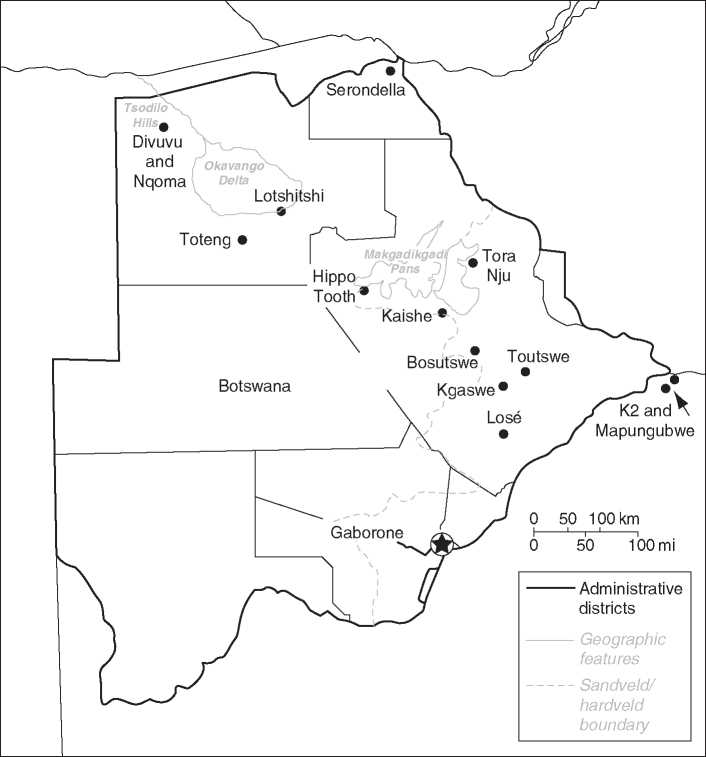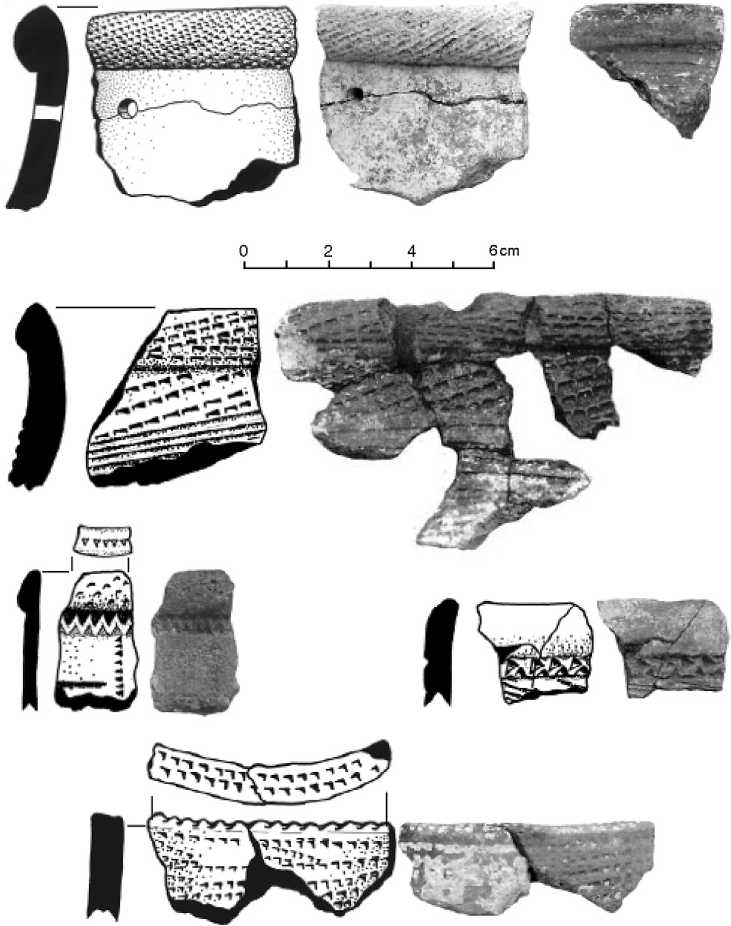The Appearance of Sheep and Cattle
Beginning around 2000 years ago archaeological data from the Okavango region at sites such as Toteng 1 and Lotshitshi indicate that domesticated cattle and sheep were added in small numbers to the subsistence economy of Late Stone Age (LSA) populations living by hunting, gathering, and, in some cases, fishing. While early dates for herder-foraging in northern Botswana were once viewed with skepticism because of potential problems of association between charcoal samples and the domestic animal bones they were meant to date due to mixing in the loose Kalahari sand, the most recent calibrated AMS (accelerator mass spectroscopy) dates from Toteng, done directly on cattle and sheep bones, place the appearance of both in northern Botswana between 200 BCE and 100 CE. The domesticated animal remains at the site predate levels containing Bambata ceramics by several hundred years, indicating that the economic changes associated with herder-foraging spread independently from pottery making and/or use.

Figure 1 Selected archaeological sites in northern and eastern Botswana. © 2008 Dr. James Denbow. Published by Elsevier Inc. All rights reserved.
Bambata Ware
Calibrated dates for the appearance of Bambata ware at Toteng range between CE 215 and 555, which brackets a date between CE 250 and 530 for a few Bambata ceramics from the Late Stone Age site of Lotshitshi near Maun. A bone apatite date of CE 790-1010 for Bambata ware from the site of Hippo Tooth extends this distribution eastward along the Ngami-Botletli River System to the southern edge of the Makgadikgadi salt pans (Figure 2). Bambata ware has also been collected from the surface of several other, presently undated, sites in the Makgadikgadi where it accompanies LSA materials.
Since cattle and sheep are not indigenous to southern Africa, there has been debate about the ultimate source of these domesticates for hunters and gatherers living below the Kunene-Okavango-Zambezi Rivers. Some argue for a source in the earlier pastoral Neolithic of East Africa, while others propose more western origins - either in the Early Iron Age of northern Angola and the Congo, or perhaps even the Cameroon. Debate also surrounds the nature of the ceramic assemblages classed as Bambata, with some arguing for indigenous production of these ceramics by local hunter-gatherers while others suggest that the ceramics were obtained through trade with Early Iron Age communities, perhaps even as fragments used for ritual purposes or curiosities rather than as functional vessels. Apart from generalized stylistic resemblances to some ceramics from Benfica in western Angola, however, no presently known Iron Age sites north or south of the Okavango-Zambezi Rivers appear to be definitive. Sources for these early wares are unknown.
What is certain is that a diversity of hunting, gathering, fishing, and herding adaptations developed along the rivers, deserts, swamps, and other ecological zones in Botswana at the beginning of the Common Era. Precisely how stone-using foragers and herder-foragers interfaced and interacted with arriving agropastoral populations after CE 500 is uncertain,

Figure 2 Bambata ceramics recovered from the LSA site of Hippo Tooth. © 2008 Dr. James Denbow. Published by Elsevier Inc. All rights reserved.
But it is likely that a variety of interactive forms developed that ranged from intermarriage and assimilation, to fleeting interaction and trade and perhaps even competitive or antagonistic relationships - especially along the western parts of the Boteti River where the presence of Khoi-speaking herder-foragers appears to have inhibited Iron Age settlement until 400500 years ago. During the mid-nineteenth century, historic accounts indicate that some indigenous Khoe populations in this region, such as the Deti, kept large herds of cattle that might have put them in direct competition with Bantu-speaking agropastoralists for grazing and water rights. Further east, along the southern and eastern margins of the Makgadikgadi salt pans,
Early Iron Age settlements such as Kaishe were well established by the tenth or eleventh centuries; ruins at Tora Nju and other locations extend agropastoral settlement, social stratification, and Zimbabwe hegemony into this region during the fourteenth and fifteenth centuries.




 World History
World History









